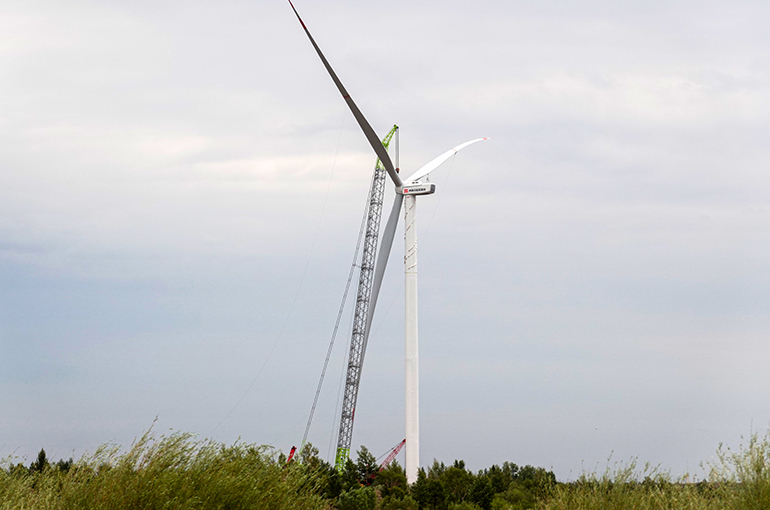 Chinese Wind Energy Firms Need to Reshape Strategies for Global Expansion, Insiders Say
Chinese Wind Energy Firms Need to Reshape Strategies for Global Expansion, Insiders Say(Yicai) Oct. 23 -- As Chinese wind power firms ride the global shift toward cleaner energy, ‘going global’ is no longer just about selling products abroad. Rather, companies should rethink their strategies and business models to effectively integrate into local markets and fully capitalize on overseas opportunities, industry insiders said at a recent industry event.
International expansion brings with it on-the-ground challenges. While Chinese turbines are becoming more prominent thanks to their cost and size advantages, overseas operations are changing the pricing system, Qian Weihua, vice president and chief technology officer of SKF China, said at the 2025 Beijing International Wind Power Conference and Exhibition where ‘going global’ was a hot topic.
Building local factories and developing supply chains drive up costs for materials, labor, facilities and services, gradually eroding China’s traditional cost advantage, Qian said. Beyond cost, companies must consider how to integrate into the local ecosystem, and address issues such as Environmental, Social and Governance requirements, employee training and compliance.
After overcoming the hurdles of cost, technology and strategy, understanding real overseas market needs is key to adding value, said Peng Chengyao, director of power and renewables research at S&P Global Commodity Insights. Overseas demand for China’s clean energy is not just for cheap wind turbines, solar panels or batteries. Foreign markets also want to replicate the success of China’s industrial chain and leverage Chinese tech and production to create jobs, cultivate skilled talent and optimize their energy structures.
“The wind industry relies less on upstream raw materials than solar or batteries, giving it an edge in energy transition and local economies,” Peng said. For Chinese wind power companies to go global, they must shift their mindset from being “a Chinese company abroad” to “an overseas firm invested by Chinese.” By building local supply chains and exporting management expertise, they can use their “know-how” as a soft power to develop local industrial chains and achieve long-term, win-win outcomes.
Enormous Potential
China’s wind power exports soared more than 70 percent in 2024, with leading companies bagging plenty of international orders.
“We expect our wind turbine exports to surge seven to eight times this year,” said Wei Min, deputy general manager of Windey.
In Western Europe, some countries were using protectionist policies to block Chinese firms, and so Hangzhou-based Windey instead secured more orders in Serbia. “We are also keeping a close eye on Azerbaijan, which has a power transmission agreement with the EU. The company hopes to establish a presence around these key markets to demonstrate the reliability and competitiveness of Chinese turbines,” Wei said.
Meanwhile, Mingyang Smart Energy is building factories locally. The company recently said it plans to invest EUR1.5 billion (USD1.7 billion) to construct the UK’s first fully integrated wind turbine manufacturing base in Scotland that will produce both offshore and floating turbines. The first batch of nacelles and blades is scheduled to roll off the production line in late 2028.
“The potential in overseas markets is enormous,” Mingyang said. “By setting up a production base abroad, the company aims to create an offshore wind power hub serving the UK, Europe, and other non-Asian markets.”
Editor: Kim Taylor